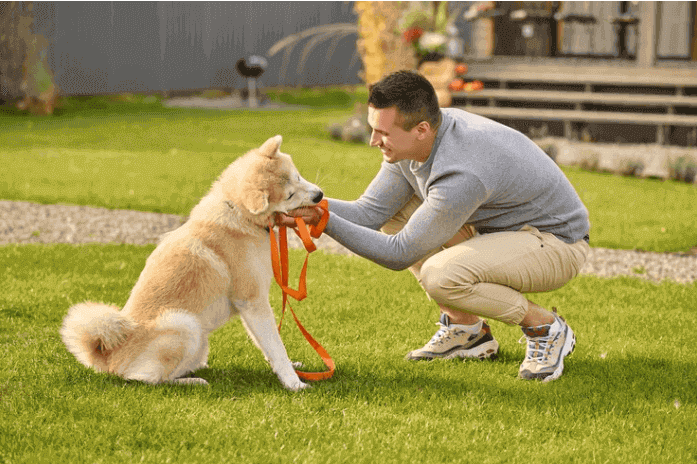
Master the Art of a Trained Dog: Expert Tips and Techniques
Having a trained dog isn’t just about convenience; it’s about building a strong bond with your furry friend and ensuring their safety and happiness. In this guide, we’ll explore expert tips and techniques to help you master the art of a trained dog. Whether you have a new puppy or an older dog, these insights will set you on the path to success.
Why Is Dog Training Important?
Before we dive into the tips and techniques, let’s understand why dog training is essential. A trained dog is a happier dog, and here’s why:
1. Safety
Trained dogs are less likely to engage in risky behaviors like running into traffic or consuming harmful substances.
2. Socialization
Well-behaved dogs are more welcome in public spaces, making outings enjoyable for both you and your canine companion.
3. Communication
Training fosters better communication between you and your dog, strengthening your bond.
4. Reduced Stress
A trained dog is less likely to exhibit problematic behaviors, reducing stress for both you and your pet.
Expert Tips for Effective Dog Training
Now that we understand the importance of dog training, let’s explore expert tips and techniques to ensure success:
1. Start Early
Begin training as early as possible to establish good habits and prevent undesirable behaviors from forming.
2. Positive Reinforcement
Reward your dog’s good behavior with treats, praise, and affection. This motivates them to keep doing the right things.
3. Consistency
Consistency is key in dog training. By using the same commands and rewards every time, you’ll prevent any confusion for your furry friend.
4. Patience
Training can be challenging. Be patient with your dog, and remember that it’s a learning process for both of you.
5. Basic Commands
Teach fundamental commands like sit, stay, and come. These commands are the building blocks of a polite and obedient dog.
6. Socialization
Expose your dog to various environments, people, and other dogs to build their confidence and adaptability.
7. Leash Training
Train your dog to walk politely on a leash. This enhances control during walks and prevents accidents.
8. Problem Solving
Address behavioral issues promptly with positive reinforcement and professional guidance if needed.
Techniques for Advanced Training
Once your dog has become proficient in the fundamentals, you can explore more advanced training methods:
1. Clicker Training
Clicker training is an effective method for teaching complex commands and tricks. It relies on the sound of a clicker to signal correct behavior.
2. Agility Training
Agility training is a fun way to challenge your dog’s physical and mental abilities while improving their obedience.
3. Canine Sports
Engage your dog in canine sports like obedience trials, flyball, or dock diving for both physical and mental stimulation.
4. Advanced Commands
Teach advanced commands such as “leave it,” “heel,” and “down-stay” to enhance your dog’s obedience.
5. Emotional Intelligence
Work on your dog’s emotional intelligence by teaching them to read your cues and respond appropriately.
The Role of Professional Training
While many dog owners can achieve great results with DIY training, some situations may benefit from professional assistance. A certified dog trainer can provide personalized guidance and help address specific behavioral issues.
Conclusion
Mastering the art of a trained dog is a rewarding journey that deepens your bond with your furry companion. By following these expert tips and techniques, you’ll not only have a well-behaved dog but also a happier and healthier one. Remember, patience, consistency, and positive reinforcement are the keys to success. Start early, be persistent, and enjoy the journey of training your beloved canine friend.
Now that you have these expert insights, embark on your dog training adventure with confidence and love. Your dog will thank you with unwavering loyalty and companionship.





